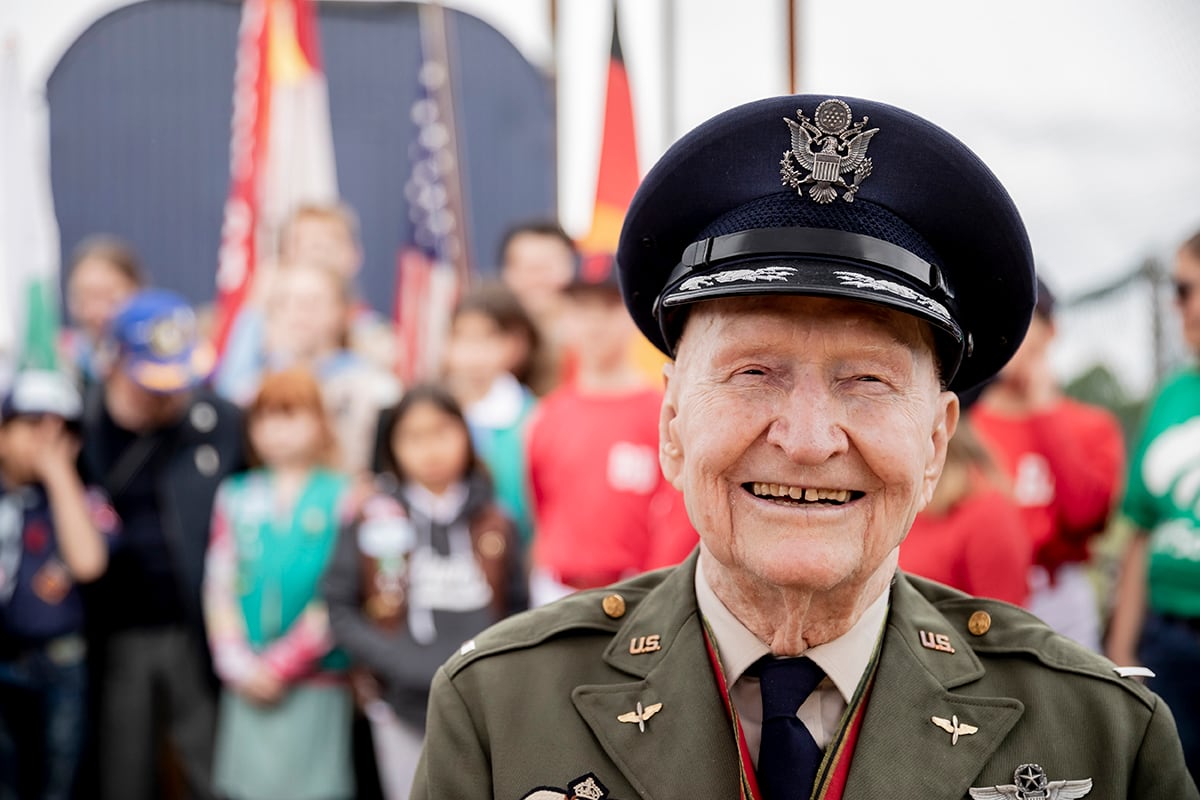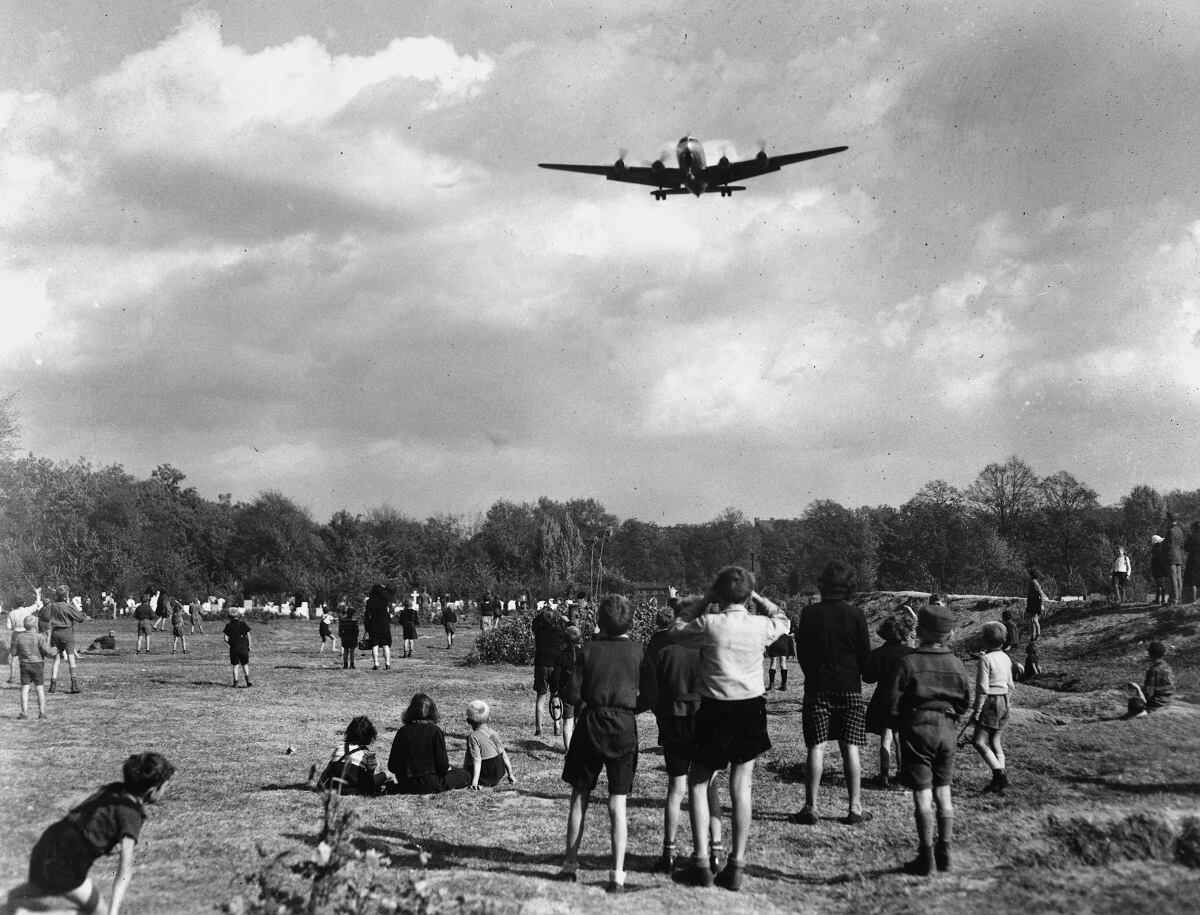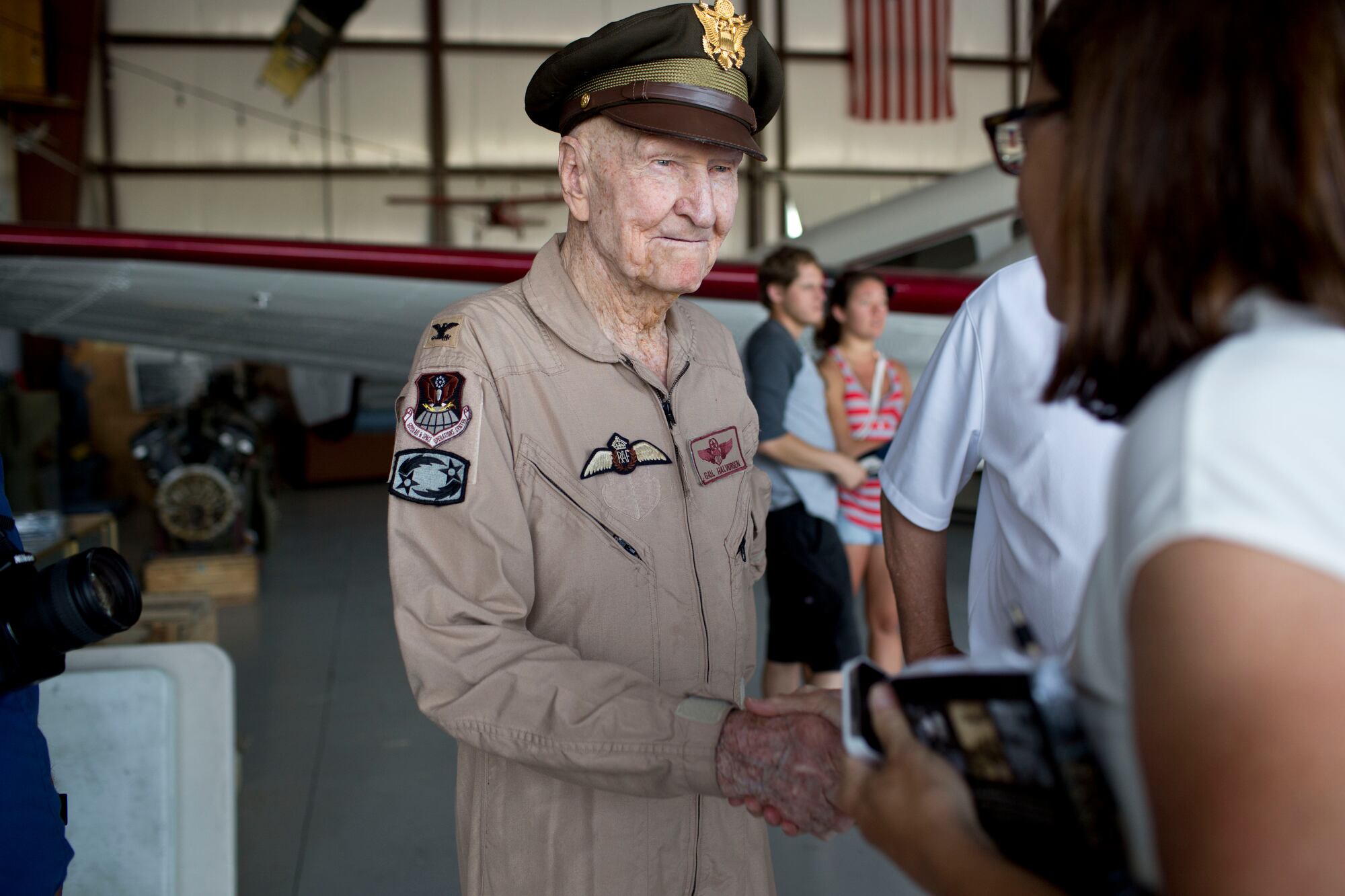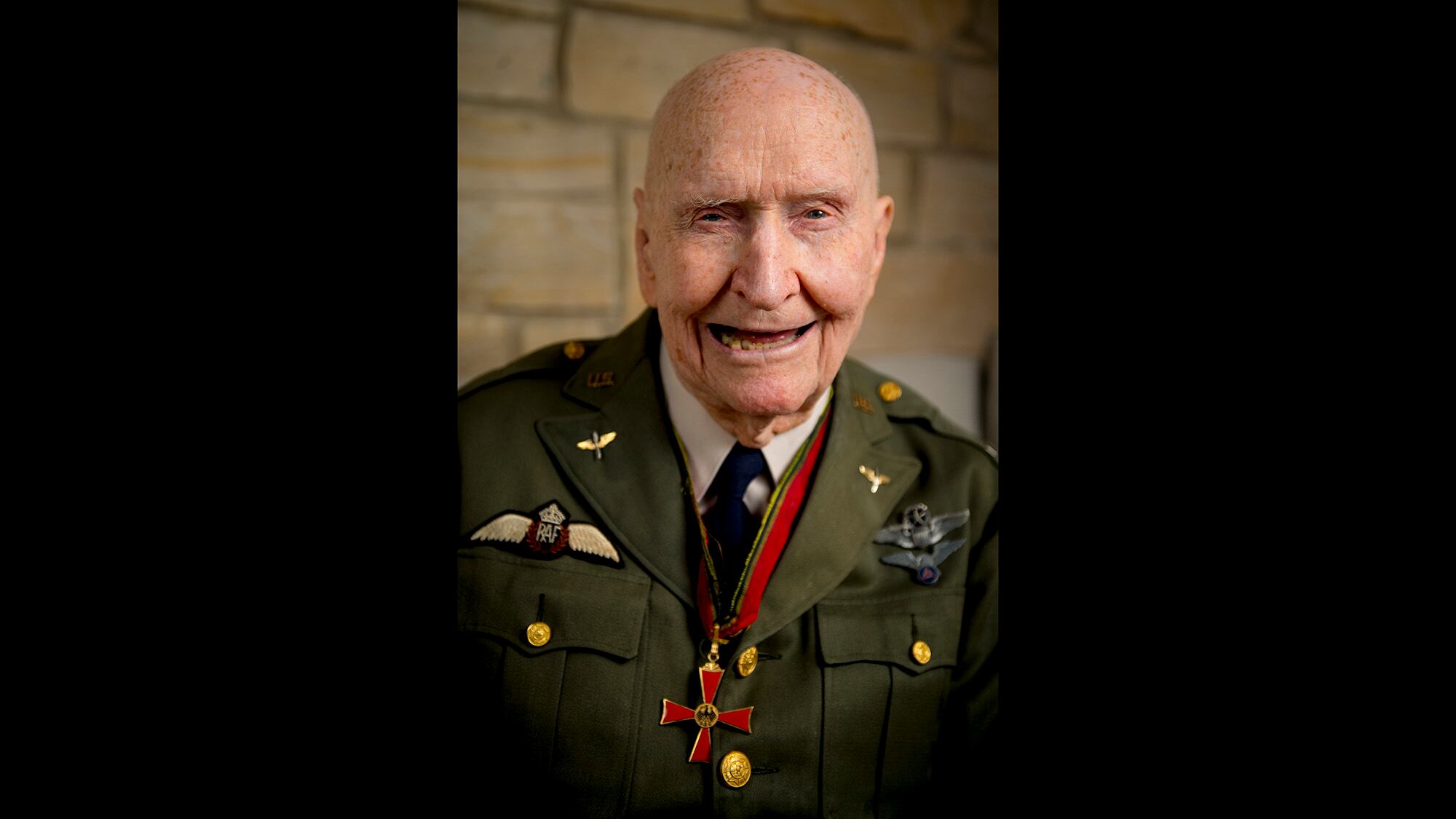PROVO, Utah — Retired Air Force Col. Gail S. Halvorsen changed the course of history with just two pieces of gum. Now has made a bit of his own history. Halvorsen turned 100 years old this month.
For all that has been written and documented, and all the awards that have been given, the infamous “Candy Bomber” or “Uncle Wiggly Wings” — as the children of Berlin called him — Halvorsen’s story never gets old.
Born Oct. 10, 1920, in Salt Lake City, Halvorsen spent most of his childhood in rural Idaho and in Garland, Utah.
As a boy, he loved airplanes and dreamed of flying them one day.
Halvorsen graduated from Bear River High School in 1939. He went on to spend a brief time at Utah State University in Logan. He also joined the Air Force ROTC and got his private pilot’s license in 1941.
To understand why Halvorsen is beloved by the people in Germany and Berlin, you must understand what happened.
Halvorsen joined the Air Force in 1942. After training, he served in the South Atlantic theater flying planes for the foreign transport service.
For whatever he accomplished during the war years, it was the years just following World War II that changed his life forever.
RELATED

The devastation left behind from the war included a split in philosophies on how Germany, and particularly Berlin and its people, should be handled.
The Soviets had set up a blockade, including barbed wire fencing and cut off ground travel into Berlin.
In response to the blockade of land routes into West Berlin, the U.S. and its allies began a massive airlift of food, water and medicine to the citizens of the besieged city.
The main cause of the Berlin Blockade was the Cold War, which was just getting started, according to Halvorsen’s autobiography.
In order to make sure Berliners had food, “Operation Vittles” was organized under Gen. William H. Tunner, commander of the Combined Airlift Task Force.
Halvorsen was reassigned to the area to help fly missions in what is now known as the Berlin Airlift.
The Western allies had a written agreement allowing for air travel to Tempelhof air field, but not ground travel permission.
Operation Vittles filled C-47s and C-54 cargo planes with tons of flour, dried milk, dried eggs, dried potatoes, coal and other rations. They came from two air bases into Tempelhof and exited one way out.
The planes, including ones flown by Halvorsen, were landing every 13 minutes to help the nearly 2 million starving Germans. That went on from July 1948 to September of 1949.
“As I look back at Operation Little Vittles and the years that have followed, there is one human characteristic above all others that gave it birth – the silent gratitude of the children at a barbed wire fence in Berlin, July 1948,” Halvorsen wrote in his autobiography.
Halvorsen saw 30 children holding onto the fence and watching as the planes would land, unload and take off again.
While his plane was being unloaded, Halvorsen went over to the children and spoke to them. Many spoke some broken English.
“They did not beg for chocolate,” Halvorsen said. “Flour meant freedom. They would not lower themselves to ask for more.”
Halvorsen wanted to give them all something but reached into his pocket and found two pieces of gum. He broke those in half and told them to share.
The pieces were broken into smaller pieces and when there was not more, the children without took the pieces of paper wrapping up to their nose and smelled the mint flavor.

“I was astounded. I wanted to do more. That is when I promised them I would drop chocolate bars out of my plane on little parachutes the next time I flew into Tempelhof,” Halvorsen said. “They said they would share. The children wrote letters to express their gratitude.”
Halvorsen added, because of the gratitude of the children the two sticks of gum became 23 tons of chocolate and other treats from my buddies and me and others.
This act of service picked up momentum.
With so many planes, the children were afraid they would miss him. So, Halvorsen agreed to wiggle his wings so they would know it was him.
It should be noted here that Halvorsen did not have clearance to do Operation Little Vittles, but when called to see the commanding officer, he was told that he was doing a great deal of good and to keep doing it.
Well, as Halvorsen said, from small things comes that which is great, and chocolate and candy companies started donating, groups back home sent handkerchiefs and string. It was now an enterprise.
To this day, with many of the children old themselves, Halvorsen still receives love and affection from the German people.
RELATED

Halvorsen finally did go home and met up with a sweet young woman, Alta Jolley, whom he had met at college. They were married and in the course of time had five children and several grandchildren.
In 1951 and 1952, he earned bachelor’s and master’s degrees in aeronautical engineering from the University of Florida as an assignment from the Air Force Institute of Technology.
In 1958, Halvorsen was transferred to the Air Force Space Systems Division of Air Force Systems Command in Inglewood, California. Halvorsen’s job included research and development on various space projects.
The most notable of these was the Titan III launch vehicle program, which he helped chair.
During his career, he also worked on and developed plans for the advanced manned reusable spacecraft, space policy and procedures, and on the Manned Orbital Laboratory Project.
After numerous assignments, he was eventually assigned to be deputy chief of staff for research and development at the Pentagon.

By 1969, Halvorsen was preparing to turn in his retirement papers. He received a call asking if he had done so and questioned what the Air Force could be thinking.
It wasn’t the U. S. Air Force but the Germans that were doing much of the thinking. They had requested that for his last stint, Halvorsen would return to Germany.
In July of 1970, Halvorsen became the new commander of Tempelhof Airport in Berlin.
“General (Joseph R.) Holzapple thought it would be a good idea to have me return to the scene of my airlift days,” Halvorsen said.
After four years at Tempelhof, Halvorsen retired.
From 1976 to 1986 he served as assistant dean of Student Life at Brigham Young University. Following that retirement he and his wife Alta served a one-year mission for The Church of Jesus Christ of Latter-day Saints to London.
Prior to her death in 1999, the Halvorsens served another 18-month LDS mission to St. Petersburg, Russia.
After his beloved Alta died, Halvorsen was reunited with his high school sweetheart, Lorraine Pace. They married in 2004.
Over his lifetime, the Candy Bomber has made hundreds of candy drops. First as missions similar to the airlift in places such as Bosnia-Herzegovina, Albania, Japan, Guam and Iraq.
He also has taken his “sweet” message of gratitude to many schools and events throughout the world.
As he turns 100, he shares a couple of the things he has learned along the way.
• Children hold the future of the entire world in their hands. Our children and everyone’s children.
• Give service to others if you seek genuine fulfillment. The Dead Sea is dead because it does not give.
• If there is conflict when you make a decision, put principle before pleasure. The Berlin kids did. Freedom sometimes in the dim future was more important to them than the pleasure of enough food.
On May 11-12, 2019, Berliners celebrated the 70th anniversary of the day the Soviets lifted their blockade strangling West Berlin in the post-World War II years with a big party at the former Tempelhof airport in the German capital.
Among the invited guests of honor: U.S. pilot Gail Halvorsen.
On May 11, a baseball field at Tempelhof airport was named after him — the “Gail S. Halvorsen Park — Home of the Berlin Braves” in honor of his help for Berliners during the Cold War.
Dressed in a military uniform, Halvorsen told Berlin’s mayor Michael Mueller that “it’s good to be home.”




